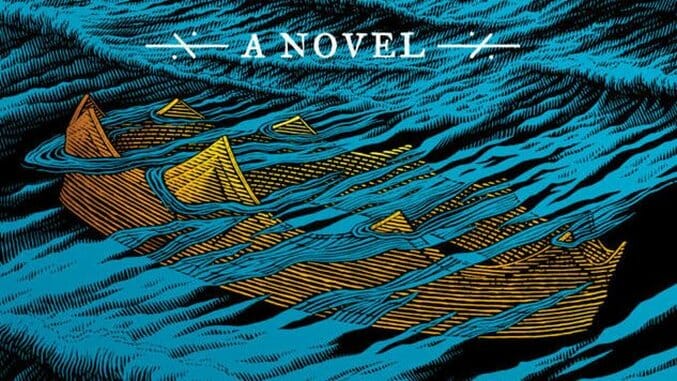Introducing Endless Mode: A New Games & Anime Site from Paste
The most remarkable fact about Linnea Hartsuyker’s The Half-Drowned King is that Ragnvald, a ninth century Scandinavian warrior, is not stabbed multiple times for his mistakes. His sister Svanhild has so much more sense, and she seems to be the wisest member of the troubled Eysteinsson family. The Eysteinssons are not so much characters as pulsating packages of Norse names or receptacles for received facts about Northern life. Hartsuyker is on sure ground when she writes about Ragnvald’s world, less so when speculating about her puppets’ motivations.
The most valuable ships today are giant metal craft filled with dour metal rectangles, so it’s strange that pirates and scavengers’ exploits should take the prize in the collective imagination. Yet deep truths about human nature are revealed in how we treat the annals of our ancestors. The Half-Drowned King is the story of Ragnvald of Maer, sworn man of Norway’s first king Fairhair Harald—who, it turns out, is the author’s distant relative.
 Ragnvald and Svanhild are the book’s nominal protagonists; the real drama exists in witnessing how the Northmen’s affairs fall into Game of Thrones-like territory. Ragnvald is in line for an inheritance, but he’s predictably betrayed as petty land-dukes squabble over land, unaware that a single great warlord will rise to make a hash of their designs. Ragnvald must choose between a pair of kings; it’s a real My Two Dads scenario of murder on the ice. During these passages, Northern life is depicted in brilliant flashes as golden wolves prowl beneath the waves.
Ragnvald and Svanhild are the book’s nominal protagonists; the real drama exists in witnessing how the Northmen’s affairs fall into Game of Thrones-like territory. Ragnvald is in line for an inheritance, but he’s predictably betrayed as petty land-dukes squabble over land, unaware that a single great warlord will rise to make a hash of their designs. Ragnvald must choose between a pair of kings; it’s a real My Two Dads scenario of murder on the ice. During these passages, Northern life is depicted in brilliant flashes as golden wolves prowl beneath the waves.
The novel’s strength lies in its insights about Viking folkways, and Hartsuyker succeeds in capturing the Northmen’s mindset. Desire and vengeance feed an omnipresent shadow of violence that lurks over every gathering, like it must have during the Golden Era of the Vikings. But same element which gives The Half-Drowned King its curious appeal—its proximity to the ancient sagas—also makes it a boring read. Who really was Ragnvald’s stepfather, and what were his deep reasons for shafting his fearsome, man-devouring stepson? How could a man so slow have been any kind of formidable adversary? The problem with most of the characterization in this tale is that much of what our heroes do and say is ruled by that distant storm-god, The Plot.
The entire narrative has the hazy blur of legend, sacrificing specificity for an ambiguity that coats its audience in a quilt of names and strange words. A lover of Viking culture will feast freely; all others will be found wanting.
In the age of “peak Viking,” as pop culture proves increasingly fascinated by the Northmen, people pose many questions: What kind of men and women were they? Why did they bother to cleave treacherous seas countless times? What quirk of culture can unriddle their employment of Loki and Thor in day-to-day life? Hartsuyker answers these questions well; it’s everything else that’s lacking. Reading The Half-Drowned King is like riding in a longship to raid: the cargo might be worthwhile, but the journey requires patience.

 Ragnvald and Svanhild are the book’s nominal protagonists; the real drama exists in witnessing how the Northmen’s affairs fall into Game of Thrones-like territory. Ragnvald is in line for an inheritance, but he’s predictably betrayed as petty land-dukes squabble over land, unaware that a single great warlord will rise to make a hash of their designs. Ragnvald must choose between a pair of kings; it’s a real My Two Dads scenario of murder on the ice. During these passages, Northern life is depicted in brilliant flashes as golden wolves prowl beneath the waves.
Ragnvald and Svanhild are the book’s nominal protagonists; the real drama exists in witnessing how the Northmen’s affairs fall into Game of Thrones-like territory. Ragnvald is in line for an inheritance, but he’s predictably betrayed as petty land-dukes squabble over land, unaware that a single great warlord will rise to make a hash of their designs. Ragnvald must choose between a pair of kings; it’s a real My Two Dads scenario of murder on the ice. During these passages, Northern life is depicted in brilliant flashes as golden wolves prowl beneath the waves.